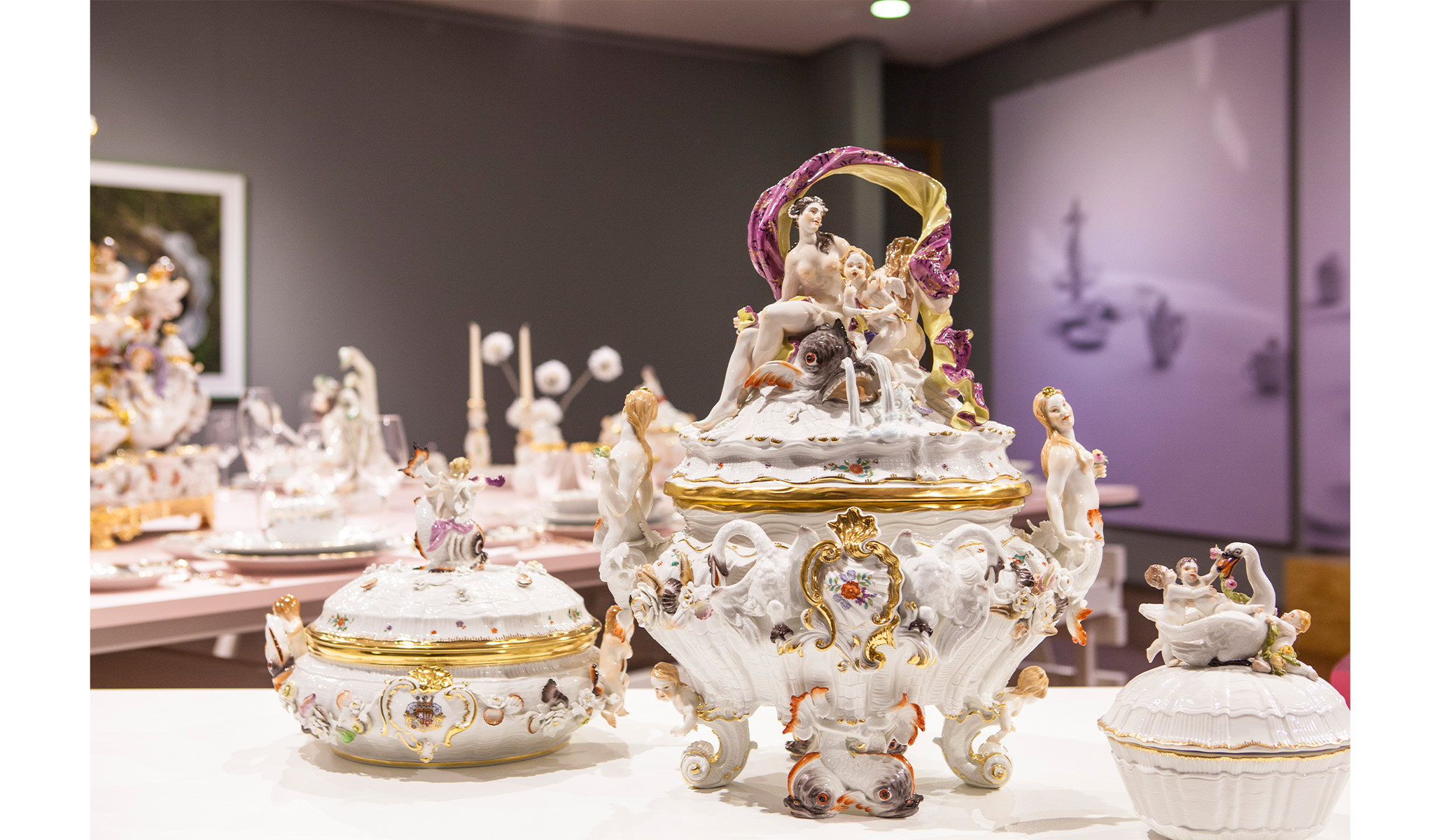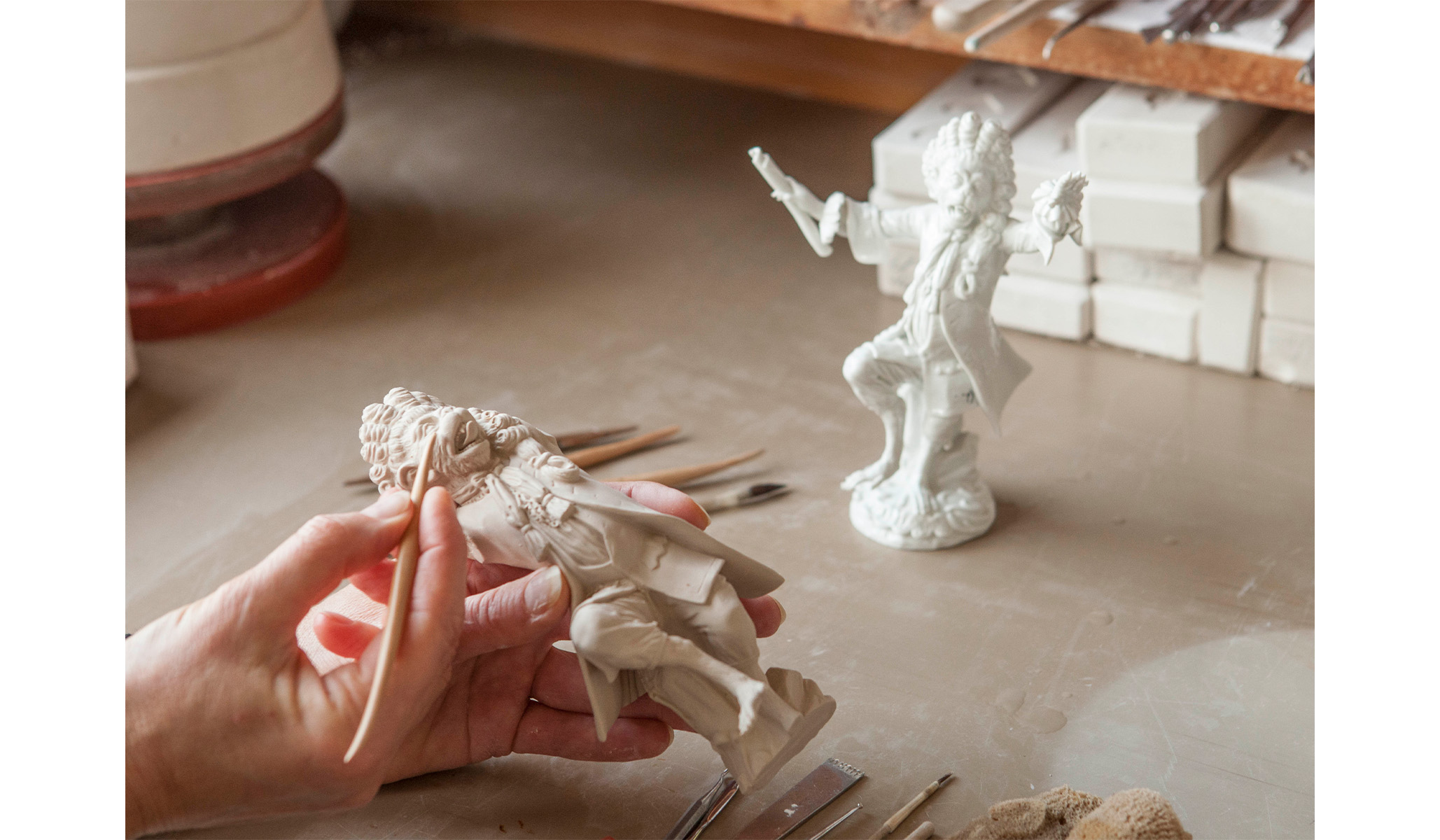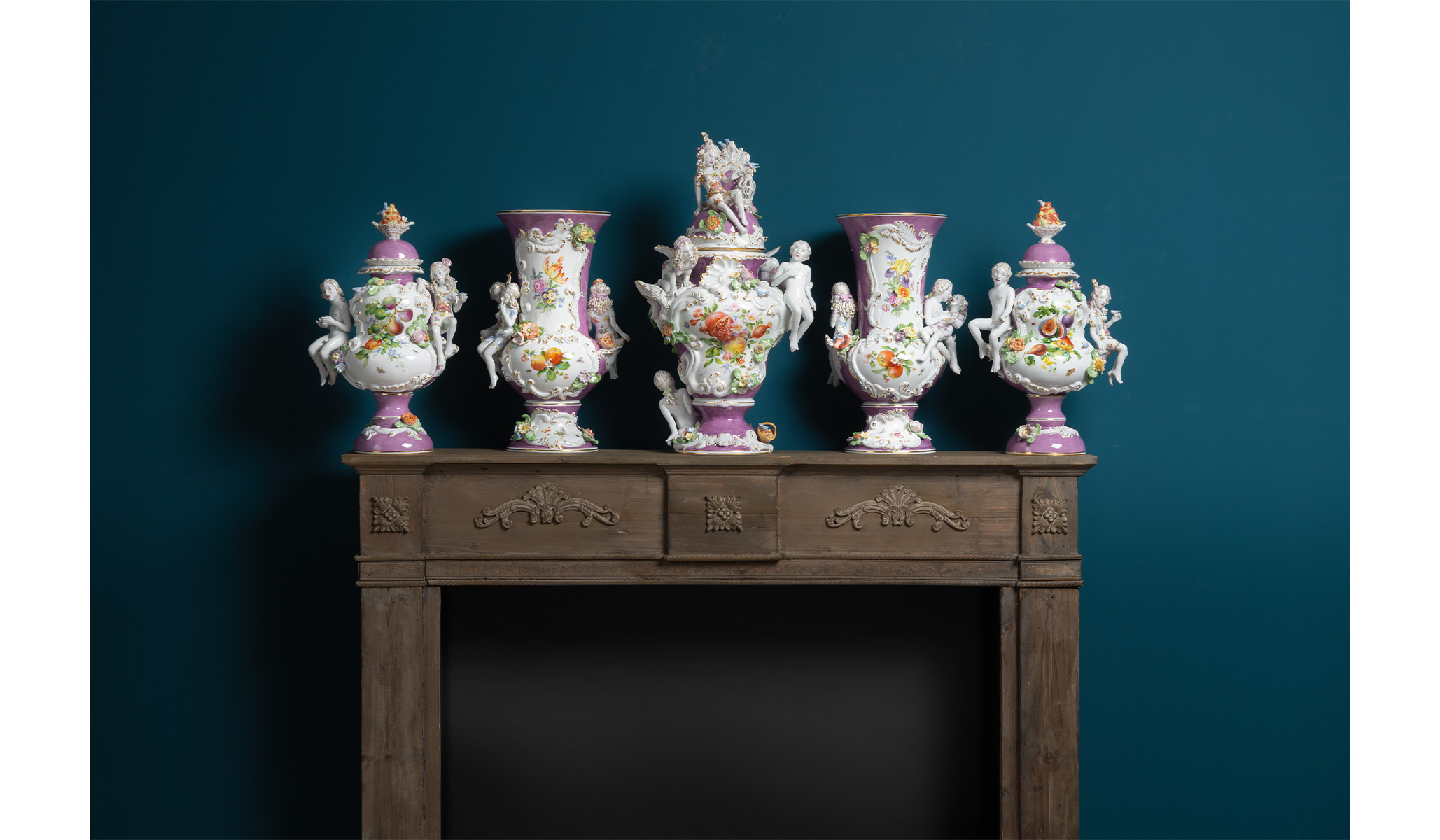


NRPLUS MEMBER ARTICLE M y week of Wagner’s Ring cycle has come and gone. In Götterdämmerung (Twilight of the Gods), the final opera, Valhalla and the old gods are incinerated in the mother of all pyres, which is my idiosyncratic segue to today’s topic: Meissen porcelain. The demise of the gods signals the dawn of Earth, humanity, and creative beauty. Plus, when it comes to the best porcelain, furnaces figure.
I’m not obsessed with porcelain, but I think it’s lovely, and the zenith of porcelain as art has been made in Meissen, a town near Dresden, where Wagner once lived and where we experienced his four Ring operas. Porcelain spends plenty of time in a furnace but, unlike Brünnhilde, Wotan, Fricka, Erda, and the Valkyries, it emerges lush or dainty, depending on the design, but always luminescent. Meissen porcelain is among the earthly delights.
I’ve never written about a corporate museum, but the Meissen factory has a very good one. It’s an educational institution with a substantial archive and well worth a visit. I’ll write about the factory museum this week. Next week, I’ll write about the majestic collection of porcelain at the Zwinger Palace in Dresden. Augustus the Strong (1670–1733), Saxony’s strongman, assembled most of it, as he did the collection of Old Master paintings at the Zwinger.

Augustus, indefatigable and wily, brought the craft of porcelain from China and Japan to Europe and established the factory in Meissen, but the story really begins in a pharmacy in Berlin. There, in 1700, Johann Friedrich Böttger, a teenaged apprentice, tinkerer, and fantasist, believed he had developed a formula to turn base materials into gold. King Frederick of Prussia ordered him arrested — like all kings, he was short of gold — but Böttger flew the coop to Dresden, where the flamboyantly profligate Augustus, learning he was hiding there, sent his goons to grab him.
Böttger remained under house arrest until he revealed his formula. Augustus placed Böttger under the charge of Ehrenfried Walther von Tschirnhaus, a chemist he’d hired to develop a recipe for porcelain. Within months, Tschirnhaus died. In 1708, Böttger was able to apply his own knowledge to Tschirnhaus’s research. Instead of gold, though, he discovered how to make porcelain, decoding the ancient formula that Chinese and Japanese makers had kept secret for centuries.
Kaolin, alabaster, and quartz, heated to 1,400 degrees C. “Heureka . . . ich habs gefunden,” someone might have screamed. The formula’s been tweaked since then, but the age of European porcelain was born.
The art-junkie Augustus was sated. Porcelain, to him, was white gold. He put the start-up factory — with his new secret formula — in a fortified hill castle in Meissen. By 1710, it was producing.
The invention of a locally produced porcelain in Saxony freed the medium from the limited aesthetics of Chinese and Japanese porcelain. Augustus, in effect, hadn’t so much learned Nana’s brownie recipe but found the key to an entirely new type of art. He collected the very best Chinese and Japanese porcelain, but, as we’ll see when I write about his porcelain collection next week, the repertoire was limited.

With the porcelain recipe in European hands, the medium could — and did — go in new directions. And Meissen and other European producers say their porcelain formula creates a harder, more durable, more translucent, and less porous product.
The Meissen porcelain factory stayed in the fortress for decades. Unlike the Tootsie Rolls recipe, the secret formula leaked. Before too long, though, the French had their own porcelain formula — starting in the 1750s, Sèvres, Limoges, and Vincennes developed. Meissen is now in a modern factory in its namesake town, which is about 15 miles from Dresden. The town wasn’t bombed during the Second World War. It’s got a little, old town center.
The Meissen company has always been in public ownership, from the era of Augustus the Strong and his duchy until today. The state of Saxony owns it. During the Communist era, the need for hard currency protected Meissen from a deep sink. Among the Stasi agents, concrete blocks, breadlines, and barbed wire, it continued to produce lustrous china and buxom shepherdesses.

The company museum is in the visitor center, which is near the factory. There’s a good introductory film in English, and demonstration workshops show how to form basic shapes using a potter’s wheel. A potter’s wheel, like the loom, is nearly as old as humanity. Meissen makes its own materials. It’s got its own tiny kaolin mine nearby. It’s the smallest mine in Europe. Different kinds of clay are abundant in the region. During my visit, the poor potter cut herself. It wasn’t exactly crime-scene bloody, but I still thought “worker’s comp.”
Every piece of Meissen is handmade. Hollowware like teapots have separately made and fused spouts and finials. Figurines will have a core body, but each body part and accoutrement and every element of the figure’s setting down to a sprigged tendril is separately made.

Each bit of molded clay is fired at 950 degrees C, and then a design is painted with a basic palette. The clay’s still a bit porous, so a steady hand is essential. Time for a second firing at 1,400 degrees C. The next step is the overglaze. There, the palette’s elaborated and embellished. Then, into the furnace again, at 900 degrees C. When an object has multiple pieces, they go through the process together. At the end, they’re fused.
Voilà! Or, I should say “Sehen Sie!”

The demonstrations are well done by specialist workers, some with decades of experience at Meissen. I learned that Meissen has an inventory of 10,000 colors assembled over what is now 310 years. The standard repertoire used today is 300. Meissen also has plaster molds of 700,000 different objects it’s produced during this period.
Back to Herr Böttger. Once he delivered the formula to Augustus, the duke sent him to Meissen to set up shop. Böttger didn’t hire copyists and emphatically did not want Chinese or Japanese craftsmen imported. He hired experienced artists who understood contemporary local — aristocratic, not peasant — taste and who were also from varied backgrounds. Painters, sculptors, pewterers, potters, and silversmiths working in the same shop created Zusammanspiel, meaning “playing together” since “synergy” wasn’t a word then.
With a new understanding of all of this — craftsmanship and philosophy — I went to the main gallery. It’s beautifully done. Between 1730 and 1735 — the end of Augustus’s reign — Meissen produced a porcelain menagerie for one of the duke’s palaces. The museum reproduces a sense of it. Storks and monkeys are life-size. There’s a reduced-scale but still impressive elephant as well as a rhinoceros.
Johann Kirchner and Johann Kändler were the most important modelers in Meissen’s early history. They developed realistic, though porcelain-white, figures, a genre that was new and reflected European courts’ interest in exotic animals. Extravagant porcelain centerpieces and porcelain plates became standards at royal dinner parties.

A selection of dinnerware from the Swan Service is wall-mounted. Made between 1737 and 1741 for Heinrich von Brühl, Augustus’s prime minister, the Swan Service is still Meissen’s biggest commission, at 2,200 pieces. Each plate has — in low relief — radiating bands suggesting a scallop shell, a pair of swans in water with bulrushes, a standing crane chomping on a fish, and a crane in the air. It’s extraordinary sculpture with a dazzling effect. Most of Brühl’s service, alas, was destroyed in 1945 by the Russians, who sacked his family’s palace and, unused to fine dining, used pieces for clay-pigeon shooting.

There are sections on porcelain figurines ranging from gamboling maidens and the blades chasing them, mama cats nursing their kittens, and Indians hunting buffalos. Porcelain figures showed changes in women’s fashion. Starting in the 1970s, workers at Meissen got more creative leeway. Thus began a modern era for Meissen. Its bread and butter for 150 years was the reproduction of old-fashioned favorites, but now, especially for dinnerware, designs are modern.
The museum does small shows of the work of living porcelain artists. I liked the exhibition of Chris Antemann’s figure sculptures on view during my visit. Antemann (b. 1970) lives in eastern Oregon and has worked off and on with Meissen’s molds, craftsmen, and equipment since 2012. She takes Meissen table decorations from the 18th century — figurines placed on dining tables for whimsy and conversation — and gives them a modern twist. Scantily clad, with oversized hands and heads, male and female figures appear up to no good. They’re delightful and ironic. I loved seeing an American artist working in porcelain.
That took me to the visitor-center shop. A twelve-piece service for two, called a starter set, caught my eye but, at €18,750, also buckled my legs and dropped my jaw. Still, the service comes with a box of fancy Lindt chocolates and, as a bonus, is dishwasher-safe. I passed in favor of a €12 Christmas ornament. We have too many dishes, but you can never have too many Christmas ornaments.

In museological terms, the scholarly seriousness at Meissen was gratifying. The factory is a central part of Saxony’s cultural story and the region’s one art that is internationally known. The galleries present themselves well. The English-language interpretation is solid. Meissen’s a business, I know, though state-owned. Everyone there seems to understand that they’re both producing goods for a high-end market but also preserving cultural heritage. Wunderschön!
